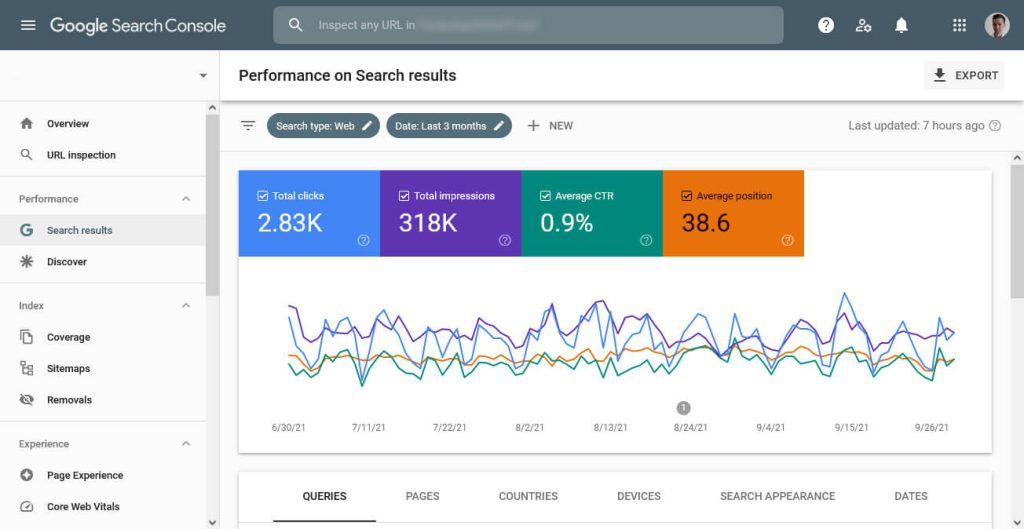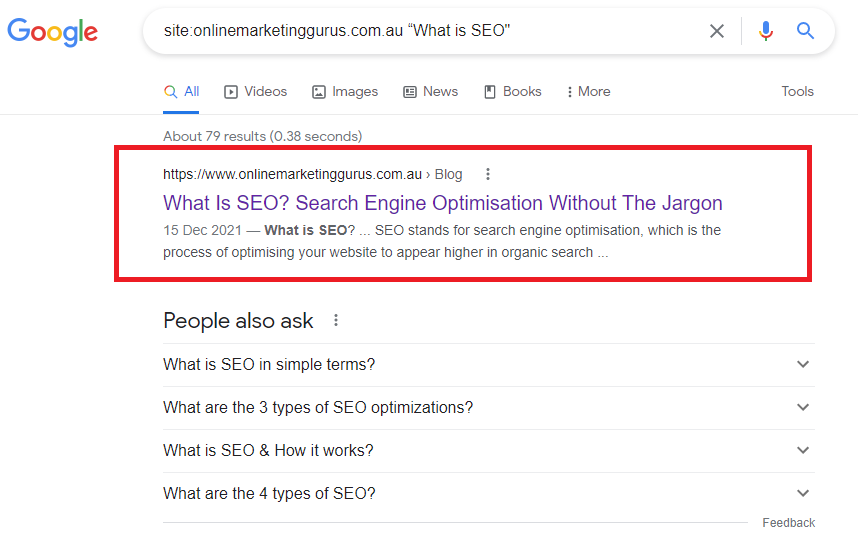SEO Ranking Drop? 9 Reasons Your Rankings Are Down 


When the internet first became something the average person could use right at home, did you ever imagine it would become such a fundamental part of our everyday lives? Or that it would become so integral to how we do pretty much anything that it could make or break your business? In fact, there is a saying among marketers that if your business isn’t on the internet, it essentially doesn’t exist.
Although these days, it would probably be more accurate to say that if your business isn’t on Google, then it essentially doesn’t exist. Of course, search engines like Bing, DuckDuckGo and others also bring some traffic — but Google owns 91.88% of the search engine market share as of June 2022. And when people talk about search engine optimisation, they’re usually referring to Google SEO.
While they may not know that only a measly 0.78% of Google searchers click on something from the second page of results, they do know that getting to the number one ranked position for a relevant keyword or search phrase is essential to their long-term success. So, it is understandable that a sudden drop in Google rankings may cause feelings of panic. We’ll look at this in more detail, highlighting:
Why do SEO rankings fluctuate?
The shortest answer to why SEO rankings fluctuate is that Google has over 200 ranking factors, and any combination of elements can cause a dramatic drop. However, the most common reasons for sudden changes in search rankings include significant content changes on your website (or the specific page in question), a major algorithm update, a Google penalty, technical issues with your site, improvements in SEO efforts by competitors, and layout changes in Search Engine Result Pages (SERPs).
But if your website isn’t performing as well as it used to, then this checklist we use to quickly diagnose and resolve the most common issues may help get your SEO efforts back on track and recover your rankings:
What do you check first when you see a drop in rankings?
The very first step to recovering your SEO ranking is to stop panicking. We’re serious. Changes in search engine rankings happen all the time, and even the best SEO marketers have had their top-performing pages suddenly plunge out of the top ten or even top 100 ranked results. Although it is something to be concerned about, the good news is that usually there is nothing to worry about.
It could be that Google has been fine-tuning their ranking algorithm, which they do several times a day, or it could be that your rank tracking application is experiencing a bug. As long as you don’t make any huge changes immediately, you’ll most likely find that everything has returned to normal within 24 hours or so.
But maybe you want to be safe rather than sorry. Or you’ve already let a whole day pass, and you’ve not regained your previous position. In that case, this simple guide can help you make sure that everything related to the most common SEO issues is in order.
This will help you determine whether there are any changes you need to make or whether you need to be patient and wait for things to right themselves, which they will do if you have consistently followed current Google SEO best practices and haven’t resorted to black hat SEO tactics.
#1. Check your data
An important thing to note here is that the view in Google’s SERPs can differ for each person. This is because Google takes personalisation seriously, so everything from stored cookies to your search history can affect what you see when you Google a certain keyword. So getting onto the first page of Google is the result of a carefully planned SEO strategy and months of work.
And part of a comprehensive SEO marketing plan is regular monitoring of your SEO metrics. So, the first thing you need to do is confirm that your ranking drop is real and not just a temporary fluctuation, and the best way to do this is with your usual SEO monitoring tools. Your first stop should always be to check Google Search Console, where you can verify your ranking and organic search traffic.
Again, there is nothing unusual about fluctuations in traffic over time — so don’t start panicking if you see a drop from one day to the next. Instead, plot your weekly SEO traffic over the last 6-12 months and calculate the average deviation in traffic from that. If you are using Google Analytics and other web analytics tools such as SEMRush, Ahrefs and others — now is the time to check those too.
Compare the different sets of data. If they align and still show a dramatic drop, it is time to move on to the next item.
#2. Review rank tracker tools
Online marketing experts will tell you again and again that your SEO strategy lives and dies by keywords. From blog posts to content pages, meta descriptions and even image descriptions — smart SEO marketers will find ways to work relevant keywords into every aspect of your website without resorting to keyword stuffing.
They will conduct in-depth keyword research to find the best combination of relevant keywords to help with your organic SEO and to identify a handful of high-performance but low-competition keywords for you to target. These niche keywords are usually what your SEO strategy is built on and the ones that you should use rank tracker tools to keep an eye on. Checking their status is the next step in identifying how serious your ranking drop is.
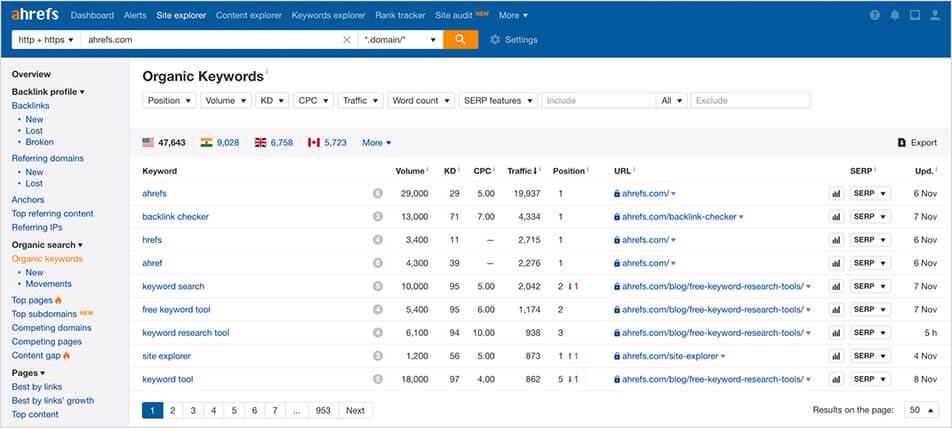
Sometimes one of your principal keywords will suddenly decline in popularity. For example, Google Adwords changing its name to Google Ads caused dramatic shifts in the rankings of several online marketing agencies. If your reports show a consistent downward trend for an important keyword your SEO strategy uses, add it to a list of corrective actions you need to take once you’ve completed this checklist.
Use a competitive analysis when reviewing your rank tracker reports. Your ranking dropped, but did any of your competitors also lose places? Look at the pages whose Google rankings have improved for the keywords you’re tracking. Have they recently updated their page, and what elements of their site differ from yours (e.g. video content, longer articles, meta descriptions, etc.)? Add your notes to that list of corrective actions.
#3. Are your pages still indexed?
Many people misunderstand how exactly Google search works. They think they type in a query, hit Enter and Google sends out a little army of search bots to find the relevant content and bring it to them. But that’s not quite accurate. Google works with an index, which is something you may have seen at the back of an encyclopaedia before.
This index is a list of specific words and the page numbers where you will find them. But not every word in the whole encyclopaedia will be indexed — just those that they think are the most important. Google does the same thing with websites, except that the ‘page numbers’ are URLs. This is important because you can specifically instruct Google not to index your website or just certain pages on it.
So, your next step is to check if Google is still indexing your website. The URL inspection tool in Google Search Console can also tell you the current index status of a specific URL and why Google could or couldn’t index that page. If an outside agency is managing your SEO and website and you don’t have access to your Google Analytics or Google Search Console data, there is no need to worry.
You can cheat a little by using a Google search trick known as a “site:” search. Simply type ‘site:yourdomain.com’ (or the appropriate domain extension for your site such as .com.au or co.uk, etc.). The results should return pages from your website, which will tell you that your site is being indexed.
To confirm that the page you’re specifically concerned about is still being indexed, use the site search qualifier, then type a short phrase from the page inside apostrophes so that Google searches for that exact phrase. For example ‘site:onlinemarketinggurus.com.au “What is SEO?”’ should bring up this exact article.
There are a variety of ways to stop Google from indexing a website or page, so read this article to find out how to check if you’ve accidentally turned that setting on.
#4. Can bots crawl your site?
This is directly related to the indexing we discussed above. Search engines and some other services use little bits of programming known as bots to search your site and add relevant snippets to their indexes. One of the ways that you can prevent your content from being indexed is by blocking Googlebot (and other search engines) from being able to crawl your website.
We mentioned that bots are effectively tiny little programs, which means that they respond to code — and the vast majority of websites have an otherwise innocuous little file labelled “robots.txt”. This file holds the code or instructions that tell any bots who visit your site what they are and aren’t allowed to do. While malicious bots ignore these instructions, Googlebot does not.
So, the next step is checking that bots are still allowed to crawl your website, especially the page or pages on which your rankings have dropped.
#5. What status code do your pages return?
A fundamental building block of how the internet works is something called HTTP, or rather HTTPS (Hypertext Transfer Protocol Secure). This protocol is how your website sends data from the server where it is hosted to the device that your visitor is using to access it. For a long time, HTTP was the standard, but Google now forces the use of the more secure HTTPS protocol because it’s safer for their users.
You may have encountered a 404-error page in your browsing before, which tells you that the link you just tried to visit doesn’t exist. This can happen for several reasons, including the original page being deleted or the URL being changed as part of an updated SEO strategy. There are other error codes you may have come across, but what you won’t have seen is the HTTPS 200 OK response code.
This is the code that the HTTPS protocol uses to indicate that whatever request you have just made succeeded. So, you click on a link, and it takes you to a page, the page loads, and you can see it on your device — that’s a successful request and returns the 200 code. Every page on your website should return a 200 code (yes, even your 404 Error page!).
Several free online tools like httpstatus.io can be used to check the HTTP status codes that your website is returning, sometimes with additional features and benefits. Keep an eye out for any pages with 3xx (e.g., 302 – redirect), 4xx (e.g., 404 – not valid) and 5xx (e.g., 503 – unavailable) errors.
Top reasons why your rankings dropped
We will continue this guide on the assumption that you confirmed your rankings dropped, that you corrected any practical issues you found in the checks above and that your positions in Google’s search results are still down after you’ve waited 24 hours for them to take effect. Because while the following items don’t necessarily involve complicated fixes — these problems are always as quick to check and remedy.
If you haven’t done it by now, this is the time to scope the impact of your rankings drop. The specific search queries and pages affected by a ranking drop can help identify the underlying issue a lot easier. You will need the data from Google Search Console and Google Analytics, Bing Webmaster Tools, other web analytics platforms that you use and your rank tracking application to do this.
Make a list of all the search queries that have dropped and, using a spreadsheet, add the following information:
The URL that was ranking for that query (if multiple pages were ranking for the same query, then list them separately)
-
-
The keyword/search cluster the query belongs to
-
Their old ranking (so you can establish a baseline)
-
Their new ranking
-
The difference between the two ranks
-
The content type that was ranking (article, video content, landing pages, etc.)
-
Whether the page is indexable
-
Any other comments that may be useful (such as the date a page was updated)
-
By laying the information out like this, you will be able to see if there is a pattern to the drop in rankings. Now it is time to start looking into some common reasons why your Google ranking dropped so quickly.
#1. Site changes or migration
Any major changes to your website can, and often do, cause serious drops in your ranking. If you’re the only one managing content for your website, keeping track of any changes or updates you made is relatively simple. However, if you make major changes across your entire site in a short period or there’s a whole team responsible for your content — things can get a little trickier.
This is why change tracking and strong governance are important elements of a sound SEO strategy. Sometimes making changes is unavoidable. For example, if your company undergoes a rebrand, then all the visual content on your website will need to be updated to match it. In addition, you might have to update your internal links because you’ve migrated to a different CMS or because of a change in your SEO strategy.
Google will treat these updated links as though it has never seen them before, and it will take some time before they are reindexed. You probably won’t get your old ranking back for some time, though, as factors like link profile also play a role in your search position.
Search engines are using the content on your website to determine your relevancy for different search queries, so even the smallest change can have a big impact on your rankings. Removing a page entirely can have an even bigger impact.
#2. Google algorithm update
One of the largest causes of ranking fluctuations is Google itself. They are constantly tweaking and perfecting their search algorithms, rolling out one to two small changes every single day. These small updates are behind what some refer to as Google Flux but have very little to no impact on SEO rankings in the long term.
Google Core Updates are a whole other story, though. These tend to happen every few months and can often spark months’ worth of discussion and advice as webmasters and SEO experts prepare for the coming changes. Some Google algorithm updates that have led to massive changes in SEO strategies and caused a dramatic Google ranking drop for top-performing sites across the board include:
-
-
Penguin update in 2012 — the first update to penalise people for “over-optimisation” or black hat SEO tactics such as keyword stuffing and unnatural linking.
-
Fred update in 2017 — the first update aimed at giving users more relevant search results, it seemed to target mostly low-value content.
-
BERT update in 2019 — the ‘biggest update to Google search in 5 years’, BERT is a deep learning algorithm related to natural language processing and was the first time that search intent became more important than search phrases.
-
Page experience update in 2021 — also referred to as the Core Web Vitals update, this change made the user experience a ranking factor with a heavy focus on responsiveness, load speed and stability of websites and pages.
-
#3. Manual search engine penalty
A manual search engine penalty happens when one of the human reviewers at Google has determined that a page or pages on your website don’t comply with Google’s webmaster quality guidelines. While this is one of the most dreaded reasons for a drop in rankings, it is also one of the least likely to happen to the vast majority of websites.
You will get a notification in Google Search Console if a manual action is ever taken against your website though, so identifying this as the reason for a rankings drop is easy. The only way to resolve this issue is to fix the problem(s) flagged by the Google team and then submit your website for review. Before you do this, save yourself some uncertainty by checking your site against Google’s Search Quality Evaluator Guidelines (documentation used by the testing team).
It is not as necessary, but it wouldn’t hurt to check your site against their Webmaster Guidelines as well. But once submitted, all you can do is wait for your changes to be reviewed and approved. The process can take days or weeks; in some cases, the affected content may not recover until the next broad core update, which tends to happen every few months.
#4. Competitor changes causing them to outrank you in Google
It is important to realise that sometimes you can do absolutely everything right and still be knocked down one or two places in rankings. But when the typical CTR of the second position in Google is less than half the CTR of the first position, that one-place drop can represent a massive loss in visitors and, by extension, a massive loss in revenue.
The only thing you can do when this happens is to conduct an in-depth analysis of the competitor that has taken your place, work out what they are doing differently from you and update your own SEO strategy with what you’ve learned. Sometimes you will be able to recover your former rank, and other times you will have to shift your efforts to one of the other pages that you’re currently ranking well for but have room for improvement.
#5. Lost backlinks
Whether you’re involved in marketing or not, you know what word of mouth is. You know the value that you put in the opinions of others (especially close friends and family), so does every marketer under the sun, and so does Google. So you can think of backlinks as a kind of word-of-mouth referral to your website from another website.
Websites with a lot of backlinks from credible sources are considered authorities on the subject in question, so their link profile and ranking improve. Even smaller websites with a limited backlink portfolio can get a boost in rankings if a website that Google considers an authority links to them. But if you lose that backlink, it can impact your ranking quite drastically at times.
There isn’t always a whole lot you can do about losing a quality backlink, but it never hurts to reach out to the webmaster and find out if there is anything you can do to get that link back.
#6. User behaviour and search intent changes requiring content updates
We mentioned the BERT update already, which is where Google changed from trying to match the exact phrase someone searched to trying to match their search intent. For example, searching for “top restaurant in Sydney” used to return search results from websites where that exact phrase had been used somewhere in the content — whether in a review, a blog post, home page or elsewhere.
Thanks to BERT, Google will now identify that the user who typed that query is conducting a sort of investigation and is most likely looking for reviews and comparisons of restaurants in the Sydney area. So, it will provide results from sites such as Trip Advisor, a popular local food blogger, news articles on foodie awards and similar — whether it mentions “top restaurant in Sydney” or not. Below is an example of the BERT update in action for the search query “can you get medicine for someone pharmacy”.
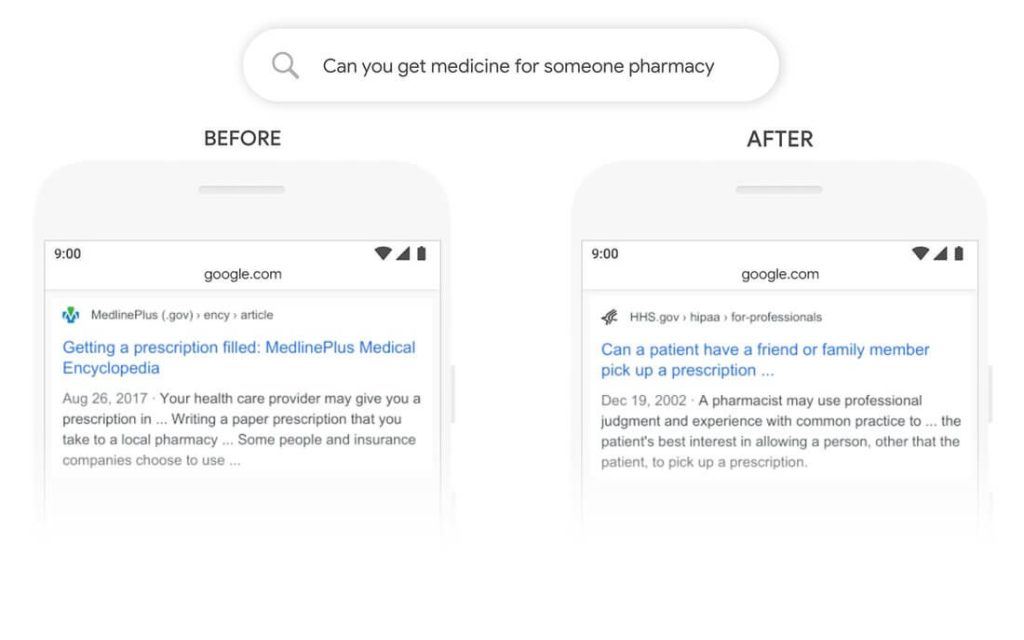
Search intent is still a relatively new field. While Google says user behaviour is not a ranking metric, CTRs are a good way to determine if your website matches the usual intent of a specific search query. This won’t be a quick fix, and you may find that you need to tweak your titles and meta descriptions, so your website looks the most relevant. Using schema markup to enhance snippets with rich elements can also be helpful here.
#7. Mobile-first indexing
The days of having to make a note to look something up at the library or when you get to the office because you don’t have a PC or home internet are long gone. Instead, these days you can Google the price of eggs in China while sitting at the North Pole, assuming you had cell coverage. In fact, by 2021, mobile browsing represented 66% of global searches.
So, Google switching to a mobile-first indexing system makes perfect sense. They want their users to have the best experience, and most of those users use mobile devices to access their services. Therefore, they should prioritise search results from websites that are optimised to provide the best possible experience on mobile.
This means that your rankings will suffer if you haven’t built your website using the mobile-first indexing best practices that Google recommends.
#8. Google SERP changes
Updates to Google’s Core search algorithm are common, as we explained. But not every update they roll out has to do with ranking factors. Instead, some of them are more aesthetic or designed to make using Google an easier process for searchers. Just think how different the SERPs you see today are from just a few years ago.
Where before, we might see a few Text Ads followed by organic search results, now the top of Google’s SERP can include images, Featured Snippets, knowledge graphs, and a whole lot more. What this means is that being the number one result in organic search doesn’t necessarily mean your site is listed at the top of the page. This is why many rank tracking tools today offer pixel tracking alongside their usual tools.
This measures the number of pixels between the top of the page and your URL listing. Around 300px down the page means searchers can see your result without scrolling. However, some searches will place the number two result as much as 1700px down the page — or below the fold. As a result, the difference in CTR between the first-ranked and second-ranked positions is extreme, dropping to what would technically be the last or second last position even more so.
Unfortunately, there isn’t much you can do about this except try to make sure that your page is the source of that query featured snippet and all the other rich content that Google provides searchers with today.
#9. Technical issues, i.e. Core Web Vitals
User experience has been an important part of comprehensive SEO strategies for some time. When studies show that as much as 88% of visitors will never return to a website where they’ve had a bad user experience — ignoring UX would be foolish. And the Core Web Vitals update is all about Google taking this very real statistic into account.
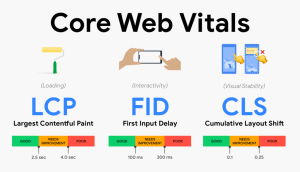
By adding User Experience to their ranking factors, they’re guaranteeing that searchers will never have to deal with slow page speeds, content that shifts all over the place as they scroll and other irritations that ruin the mobile experience. Unless they’re one of the less than 1% of people who actually scroll the second page of search results, that is.
Making sure you meet Core Web Vitals minimum standards is easy and complicated. Easy if you’ve been using a user-centric approach from the beginning, complicated if you have to update large swaths of your website before it is compliant. And frustrating because those necessary updates may cause more of a rankings drop while Google reindexes your new content.
Recover from a ranking drop with help from qualified experts
Almost everyone who is serious about online marketing and their website will experience a Google rankings drop at some point. It might result from an “algo slap” (i.e., search engine crawlers determine your site doesn’t meet certain criteria) or a manual Google penalty because something went very wrong, such as your site being hacked and used for nefarious purposes by malicious actors.
Google updates their search algorithms daily, rolling out major updates every few months. Even SEO marketers with years of experience make mistakes and don’t always manage to stay ahead of all the changes in ranking methodology. Never mind tracking how those new rules and standards will impact every page on a website that has taken years to build.
The hope, of course, is that an extreme drop in your Google ranking is only temporary and won’t cause significant harm, financial or otherwise, to your company while it recovers. But one small silver lining of this situation is the opportunity it presents to learn more about the SEO industry and implement ways to secure your website against ranking drops in the future.
The experts here at Online Marketing Gurus have been working SEO magic for years. We keep our eye on the latest SEO, social media and PPC trends to help our customers stay ahead of the curve and above the competition.
Contact us today if you would like to discuss an SEO strategy that ensures consistent year-on-year growth with passionate experts that live and breathe digital marketing.


